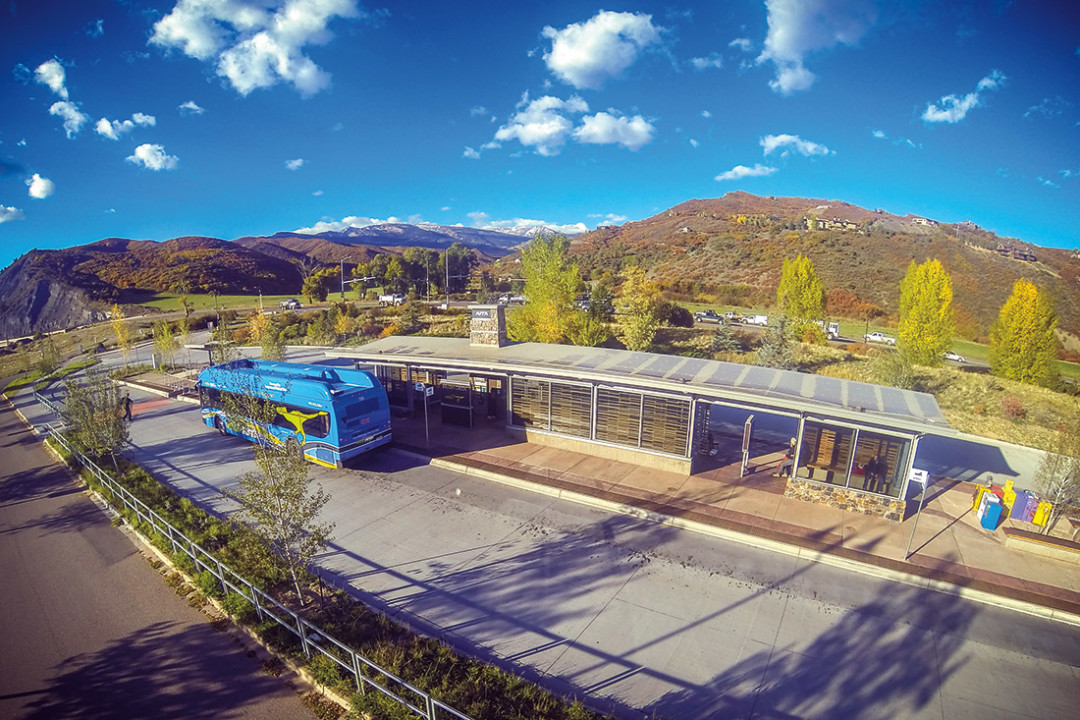Speeding Things Up

Image: Courtesy: RFTA
Whether you're a commuter traveling from Glenwood Springs to Aspen or a road biker looking to hitch a ride back upvalley after a pedal to Basalt or Carbondale, the Roaring Fork Transit Authority’s buses offer a remarkable convenience. The RFTA system is the second largest in Colorado—only Denver/Boulder’s is bigger—and it just added the first bus rapid transit (BRT) service outside of a metro area anywhere in the U.S.
Known as VelociRFTA, the system makes thirteen stops between Glenwood Springs and Aspen. With a ride time of an hour, it shaves ten minutes off of the old express buses’ trip. (For reference, it usually takes forty-five minutes to make the drive by car.) Much of that time savings comes from an accumulation of little efficiencies.
VelociRFTA bus stops were redesigned to make entering and exiting traffic on Highway 82 both faster and safer. The pull-off lanes are tapered, allowing buses to merge into them without slowing down as much as before, while a harder road surface facilitates maximized deceleration and acceleration.
VelociRFTA BRT stations are now equipped with ticket vending machines. Riders can save up to 26 percent versus the cash-fare cost on the bus, a financial incentive most regulars take advantage of. The system for using the tickets on the bus is automated. Eliminating cash exchanges can save dozens of seconds per rider.
The steps of the VelociRFTA BRT buses align perfectly with the new stations’ loading-platform height of 8.5 inches. Doing away with the high—and sometimes very tricky, for older riders—step creates a more seamless filing onto and off of the bus. That may sound inconsequential, but shaving seconds off loading times can add up to minutes overall. rfta.com













































